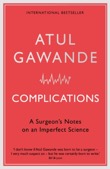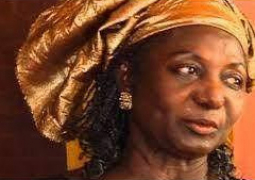
Reviewed by Aaron Barksdale
In Complications: A Surgeon’s Notes on an Imperfect Science, Atul Gawande, a general surgeon, addresses the current state of the science and practice of surgery. More specifically—as the title implies—he addresses the problems of surgery.
Complications is a collection of essays grouped under three central themes: Fallibility, Mystery, and Uncertainty—not exactly what one wants to think about before undergoing an operation. But the book isn’t horrifying or overly critical. It is simply honest.
Gawande is a general surgeon at Brigham and Women’s Hospital in Boston. He wrote Complications in the seventh year of his eight-year residency program. His résumé is impressive: surgeon, staff writer for The New Yorker, assistant professor at Harvard Medical School. He’s even a certified genius—he was awarded the MacArthur “genius” grant in 2006.
He began writing Medicine and Science essays for the online magazine Slate during the second year of his residency. Although his essays are thoroughly researched, he doesn’t just plod through a list of science and statistics. He adds a personal touch by framing the science with a story. He writes with clarity, without sacrificing accuracy for simplicity. He makes his mark as a science writer by relating scientific concepts directly to personal experiences.
In the section titled Fallibility, Gawande reveals the ways that surgeons are not perfect. The articles focus on surgical training, bad doctors, and what happens when doctors make mistakes. There is another theme that unites these essays, however. They explore how surgeons learn.
“Education of a Knife” is Gawande’s story of his surgical training, and he relates his experiences during training to the learning paradox of surgery. Mistakes are unacceptable, but mistakes are a part of learning. The paradox is that patients expect perfection from surgeons, but don’t want to be trained on. So learning has to be stolen, hidden behind operating room doors and subtleties of language. For example, the “attending” surgeon in charge might not even be in the operating room. Instead, the “assistant” resident performs the operation almost independently. Gawande admits that he wouldn’t put his own child under the primary care of a resident. “Of all people, I, a resident, should have understood. But I was not torn about the decision. This was my child.”
No real solution to this paradox is offered; learning will have to happen behind closed doors. Gawande explores solutions to most of the problems he presents, but not all of them are resolved.
In fact Mystery, the next section, discusses cases that were never resolved. They may have ended happily, but Gawande has no idea why. In all of these stories Gawande explains the relevant research and science with his usual clarity. But then he tells us where the understanding stops. He is honest in admitting what he doesn’t know.
One of these mysteries involves a 400-pound man. In “The Man Who Couldn’t Stop Eating,” Gawande explains hunger drives and the sensation of fullness, and how for some people the normal drives for appetite control just don’t work. He describes the procedure of gastric bypass surgery, its history, and how it works. Most patients lose their excess appetite after surgery, because they must adjust to a smaller stomach. But his patient always felt compelled to eat, even though he was never hungry. Then, about a year and a half after surgery, he changed. He gained control and could stop eating by choice. He returned to a normal weight and maintained it. But Gawande explains that science cannot yet explain why this man had a runaway drive, much less why he lost it.
Uncertainty is similar to Mystery (one of the stories is an actual murder mystery), but focuses more on how doctors make decisions. One essay discusses who should get the final say in deciding a treatment option: doctors or patients. In America today, the patient has the right to choose. Surprisingly, this is a drastic change from several years ago, when patients weren’t even told what medications they were on. The issue gets complicated when patients make decisions that are against their best interests. The patient in this story, terminally ill, had said that he just wanted to die peacefully at home. But when his leg started to become paralyzed, he decided to go ahead with a risky surgery that would only fix his leg, not his disease. Gawande points out that patients will make bad decisions because of fear, or false hope. This patient falsely thought that fighting off paralysis would be fighting off death.
The book’s range of subjects is wide, even for a general surgeon, from autopsies to surgical conferences, from blushing to Friday the 13th. But all the essays center around the same underlying theme: surgeons are human. The reader is not only told this by Gawande, but through him. Humanity is visible in Gawande himself, when he visits his patients outside of the hospital to monitor their recovery, or when he talks about his personal struggles and his children. His wife Kathleen isn’t named in any of the articles, but the book is dearly dedicated to her in the acknowledgements, where Gawande finally takes off his mask and scrubs, puts on his plain clothes, and thanks the people in his life.
This book is about the imperfections in the science and practice of surgery, but there is comfort in understanding the human element of surgery better. We see through Gawande that behind the lab coat and the surgeon’s mask there is heart, there is compassion. And for all of the imperfections, we know that this person cares—almost to the point of obsession—for our wellbeing.
Available At Timbooktoo Tel:4494345.




